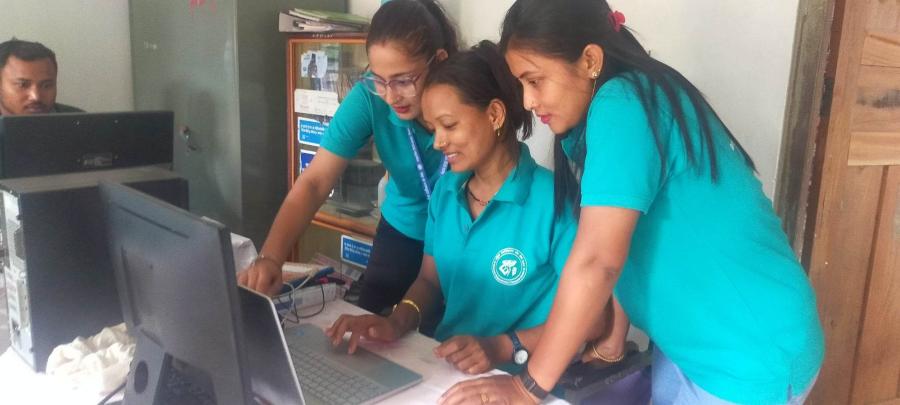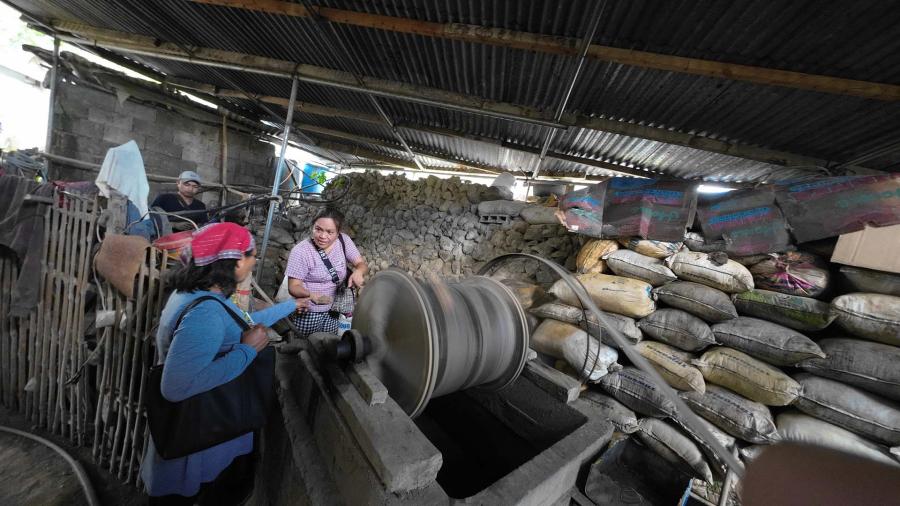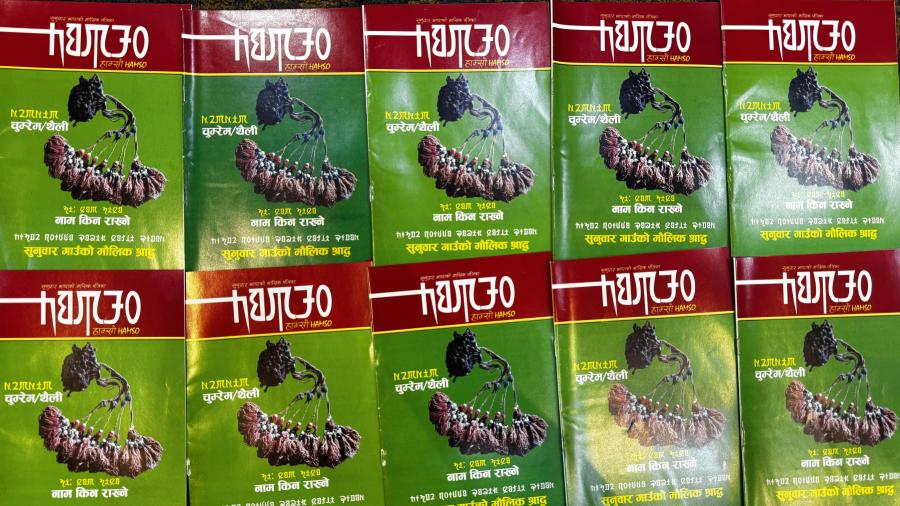For more than 20 years increasing numbers of outsiders have visited the Sherpa of northeastern Nepal's Khumbu region near Mt. Everest. While visitors provide increased economic opportunities, they also cause the progressive erosion of Sherpa cultural traditions and serious degradation and depletion of natural resources in the fragile mountain environment.
In response to these changes, the head lama of the Buddhist Tengboche Monastery proposed the construction of a Sherpa Culture Center, consisting of a Library/Museum and a Monks' Residence, to be built adjacent to the Tengboche Monastery. The center will help maintain and stimulate the Sherpas' pride in and knowledge of their traditions and will deepen visitors' understanding of Sherpa culture and religion. In 1981, Cultural Survival's Board of Directors voted to support the Tengboche Culture Center as a Special Project, and to coordinate and direct funds raised for the project. The Project Coordinator for Cultural Survival is Kathleen Peterson, an American Tibetologist who has worked closely with the head lama in the planning and implementation of the project.
Sherpas and Nepal
Some 450 years ago, Bhotia peoples migrated south from Tibet and settled in the mountainous Himalayan regions of northern Nepal. Among them were Sherpas, who settled in the Solu-Khumbu region of the Sagarmatha zone of northeastern Nepal, practiced lamaistic Buddhism and maintained themselves through agriculture, livestock-raising, and long-distance trade into Tibet and the Middle Hills to the south.
Recent political events have disrupted traditional Sherpa trading patterns. In 1959, the Chinese National Army invaded Tibet and closed the border between Tibet and Nepal. This brought a halt to the extensive trade networks which constituted an essential complement to Sherpa agricultural and pastoral activities. Traditional crafts were discontinued when imports of wool from Tibet ended. Sherpa men now depend on Western clothing or cotton Indian imports, a poor substitute for the warmth of wool. Though agriculture is still important, yak and cross-breed cattle raising, once a symbol of prestige among Sherpas, has decreased since these animals are no longer traded in Tibet and are needed less often for transport through the mountains. Many young men now opt for the more lucrative occupations associated with the tourist industry.
The closing of the Tibetan border accelerated changes initiated by Nepal's own political reorganization. Fortunately, the development of mountaineering and tourism provided a timely alternative and significant source of income for Sherpa working as porters and guides, without causing any grave hardship or forcing major Sherpa migrations from the region. Nevertheless, this has meant that large numbers of young men and some women (about one member per household) are absent for up to 8 or 9 months of the year, adversely affecting community and family life.
Sherpa villages have long been noted for their unity. However, the shift in political and economic power from older to younger men and a switch from barter to a cash economy have changed this. Also, national policies, including the regulation and control of natural resources, have affected community decision-making. The region's forest reserves, previously controlled by Sherpa forest guards appointed by the community, are now under the control of the national government. Local residents no longer feel responsible for forest maintenance.
Buddhist monasteries have always played a central unifying role in Sherpa spiritual, political and educational life. They have served as a repository for Sherpa cultural expression and activity. In the past, Sherpa supported the monasteries which, in turn, provided education both to those preparing for a monastic life and to those boys who wished to learn to read and write for practical or ritual purposes. But in recent years, interest in the monasteries has been on the wane. At Tengboche the number of monks entering the monastery declined considerably while others left to enter the lay community. Interest in and observance of religious rituals and festivals had slackened. Fewer and fewer Sherpa learned Tibetan texts, and the language of the scriptures was being forgotten. Practical young Sherpa were more interested in learning Nepalese and English.
The Culture Center
The Khumbu region is the most popular trekking area of Nepal, and the Tengboche Monastery, the oldest Sherpa celibate monastery, lies on the path to Mt. Everest. Receiving more than 5,000 tourists each year, Tengboche is thus the most frequently visited Sherpa monastery. The head lama of the Tengboche monastery and other community members decided to build a Culture Center to reinforce Sherpa values and revitalize Sherpa culture. The Center was also intended to provide information about Sherpa culture to visitors. The community responded enthusiastically to the project. Local craftsmen donated labor for the construction, in traditional Sherpa style, of the Museum/Library building and the Monks' Residence. Privately owned artifacts, crafts and clothing have been donated for exhibits, including the head lama's private, invaluable library of sacred Buddhist texts from his private collection.
Cultural Component
The Monks' Residence was completed in late 1981, and houses 24 new monks. It will allow more boys to begin traditional monastic training and will contribute indirectly to the social and cultural well-being of all Sherpa by strengthening the monastic community.
The Library/Museum building was constructed in 1983. The costs of construction were covered by the Nepalese government's Department of Parks and Wildlife. There are six rooms, including a Tibetan library; Western language and Nepali language library; two small study rooms and two small exhibition rooms (one containing examples of Sherpa history and material culture and the other containing religious and ritual artifacts). A traditional Sherpa altar/Tibetan library niche has already been constructed with funds from Cultural Survival. The Tengboche head lama has collected Tibetan library materials and donated artifacts that will be housed in the building. Installation of the first of these materials began in August 1984. All explanations accompanying exhibits will be in Tibetan, Nepali and English.
Ecological/Developmental Component
Recognizing the serious ecological imbalances and pressures on the region where human and material waste disintegrate very slowly, and forest resources replenish themselves even more slowly, environmental protection and reforestation programs have been planned. These will be implemented initially by young monks of the monastery. To help protect and manage Khumbu's rapidly dwindling forest resources, most of this region has been designated as a National Park and severe restrictions have been placed on the use of Khumbu forest products. The Sagarmatha Park Warden reserved 7,000 seedlings for planting in June 1984, and two plantation areas were measured and fenced. Also, a solid waste management program is in progress, with construction of 10 new latrines and designs for 6 permanent waste receptacles completed.
Nepal opened its borders to outsiders only 30 years ago. Mountaineering and tourism are now major sources of foreign exchange for Nepal and of income for Sherpa. The reorientation of the Sherpa economy and presence of large numbers of outsiders have wrought profound changes on many aspects of their lives, yet they have been able to maintain, even improve, their standard of living. The Tengboche Monastery, with the soon-to-be completed Culture Center, encourages a continuation of Sherpa Buddhist heritage and traditions which is sure to make adjustments easier in the coming decades.
Article copyright Cultural Survival, Inc.



